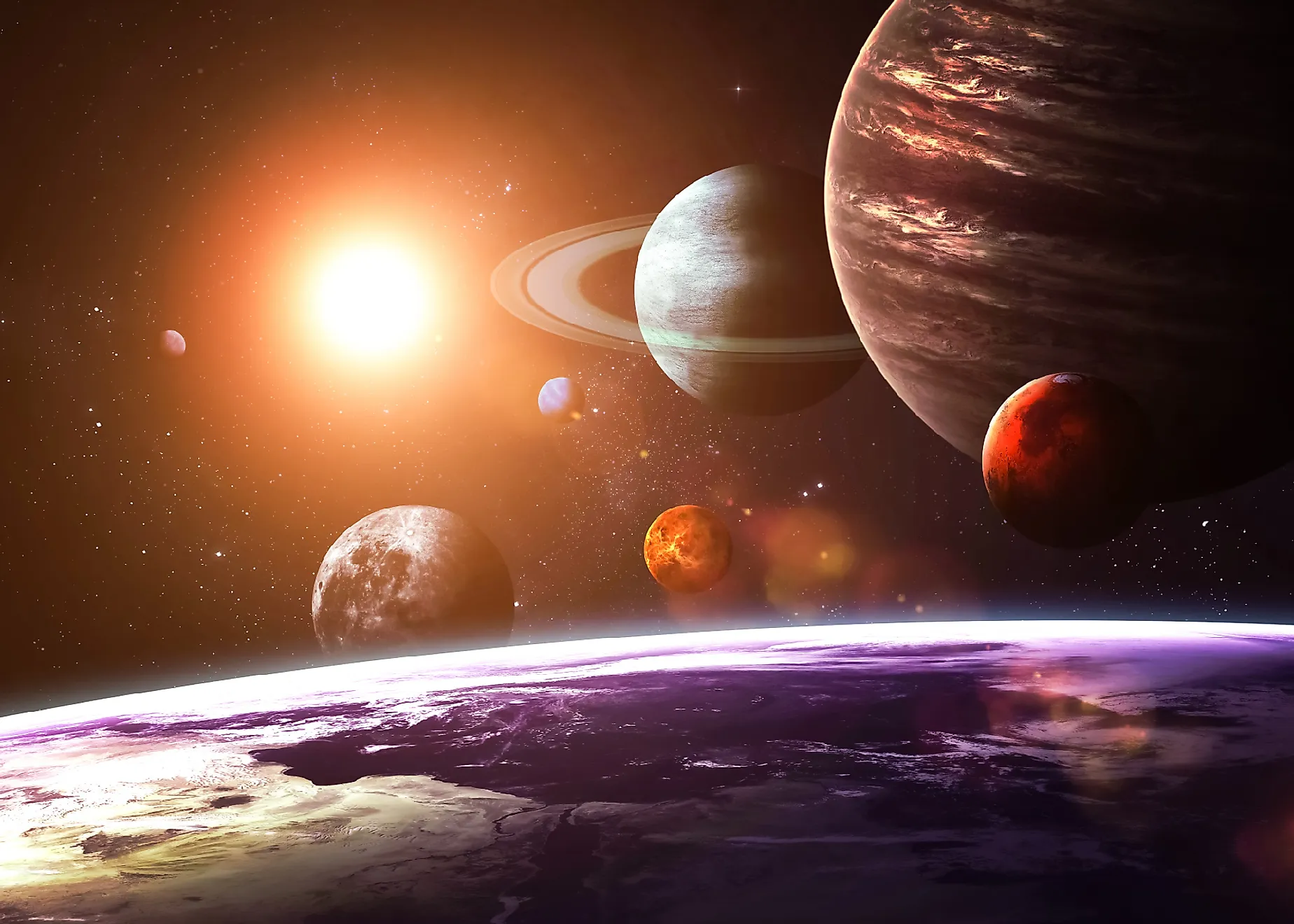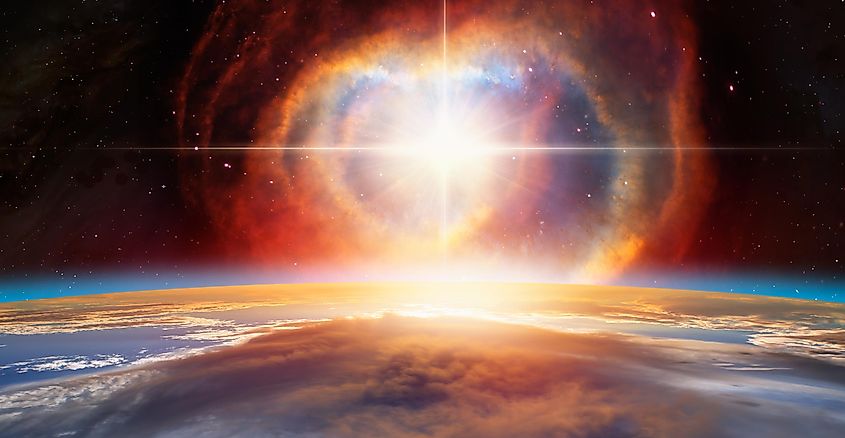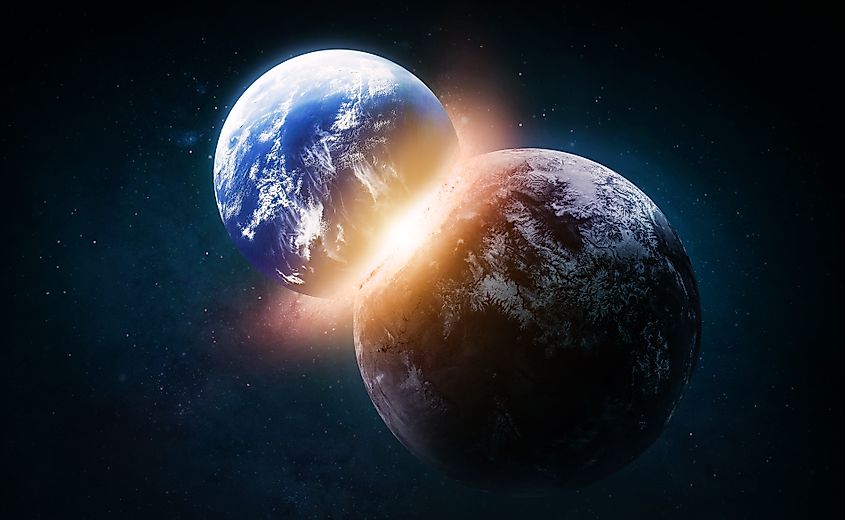
Solar System
What is a solar system? A solar system is essentially a star orbited by one or more planets bound to it by its gravitational pull. Our solar system is home to eight planets, several dwarf planets, over 200 moons, countless asteroids, comets, meteors, and other forms of planetary debris. For most of history, it was believed that our solar system was the only one. It was generally thought that the process of planet formation was so rare that it was nearly impossible for any star to have planets form around it. However, in the last 50 years, science has gradually uncovered how planets form around stars, and it turns out that planet formation is a natural part of star formation. In our galaxy, every star is likely accompanied by one or more planets. When we gaze upon the stars during a clear night, we are not just seeing individual stars; we are looking upon thousands of solar systems.
How A Solar System Forms

For a solar system to form, a star must form first. Every star, regardless of its size or mass, forms in virtually the same way: a large cloud of hydrogen gas clumping together and collapsing under its own gravitational pull. Stars are generally born within star-forming regions called nebulae. A nebula is a vast cloud of hydrogen gas, along with small amounts of other elements and compounds. Star formation is usually ignited by some external process such as a nearby supernova, another forming star, or a galactic merger event. External processes such as these can heat up nearby hydrogen gas, causing it to clump together. As more hydrogen clumps together, its gravitational pull increases. Once the cloud of hydrogen becomes massive enough and hot enough, nuclear fusion occurs. Within the core of the forming star, individual hydrogen nuclei will collide and fuse, forming helium nuclei. This process releases a tremendous amount of energy, and the forming protostar will soon burst into life as a true star. However, not all of the material in the region will become part of the star. Some will fall into orbit and become a protoplanetary disk. It is in the protoplanetary disk that stardust will form into planets.

How do you get from stardust to planets? This process was and remains somewhat of a mystery. As a star forms, a gigantic disk of stellar material forms around it, a protoplanetary disk. Within this swirling disk of stardust is where planets and their moons form. For decades, astronomers had assumed that our sun was unique in that it was believed to be the only star accompanied by planets. This was because every process astronomers could come up with was simply too unlikely for it to happen around other stars. However, in 1996 astronomers announced the confirmation of the first planet found orbiting a star other than our sun. Over two decades of intense research into exoplanets, this discovery has been followed, revealing that every star we can see is likely accompanied by its own planets.
Within star-forming regions, telescopes have found and confirmed the existence of planet-forming disks around young stars. Although these discoveries confirmed that planets form around stars in disks of stellar material, consequent observations raised more questions than they answered. Notably, it turned out that protoplanetary disks don’t tend to exist for very long (in astronomical terms). Instead, on average, a protoplanetary disk will exist for a mere 10-million years before dissipating into the surrounding space or falling into the forming star. This means that a solar system must form within a 10-million-year window, a very short period, especially given that many geologic processes on the planets themselves can take longer than that to unfold. The problem now was to puzzle out how stardust could create an entire solar system in that window.
The current explanation for how planets form is a relatively straightforward one. It starts with tiny particles of dust in orbit around a star. The gravity between such small particles is insufficient to pull them together to form larger objects. So for the first large rocks to form (called planetesimals), the electrostatic force must hold them together. Dust particles will have an electric charge, and thus negatively charged ones will be attracted to positively charged ones and vice versa. However, the electrostatic force will not be sufficient as soon as objects become too large. Thankfully, we have gravity to take over as soon as this occurs. Once things become large enough for gravity to become relevant, the growth of planets becomes exponential as more massive objects impact and stick together, increasing the pull of their gravity and drawing in more material. Throughout millions of years, several planets will emerge.
Planetary Collisions

A vast number of planets can form from a single protoplanetary disk. As many as a hundred planets formed around the sun in our own solar system. The solar system currently has nowhere near this many planets, so what happened to them all? With so many planets, it was virtually impossible for any to find a stable orbit. The gravitational pull between them was simply too chaotic. Some of these planets were entirely flung out of the solar system, doomed to drift through the emptiness of interstellar space forever. Most of the planets, however, collided with another. Depending on the size of the planets and the angle at which the impact occurs, the two worlds would either destroy each other or merge together to form an even larger planet. In our solar system, every planet likely underwent one or more collisions in the past. The Earth is no exception. Around 4.5 billion years ago, the Earth collided with a Mars-sized world. The resulting collision nearly destroyed the young Earth, yet fortunately, the Earth survived and absorbed the smaller world. Debris from the crash entered Earth’s orbit and eventually formed the moon.
Solar System Terms And Definitions
| Term | Definition/Explanation |
|---|---|
|
Solar System |
A star that is orbited by one or more planets through the force of gravity |
|
Protostar |
A star in its initial stages of formation, just prior to the ignition of nuclear fusion |
|
Protoplanetary disk |
A vast disk of stellar material that forms around a young star, the birthplace of planets |
|
Nebula |
A nebula is a star forming region that contains an abundance of various elements and compounds |
|
Nuclear Fusion |
the process by which two atoms fuse together to form a heavier atom. It is the process that powers the stars |











